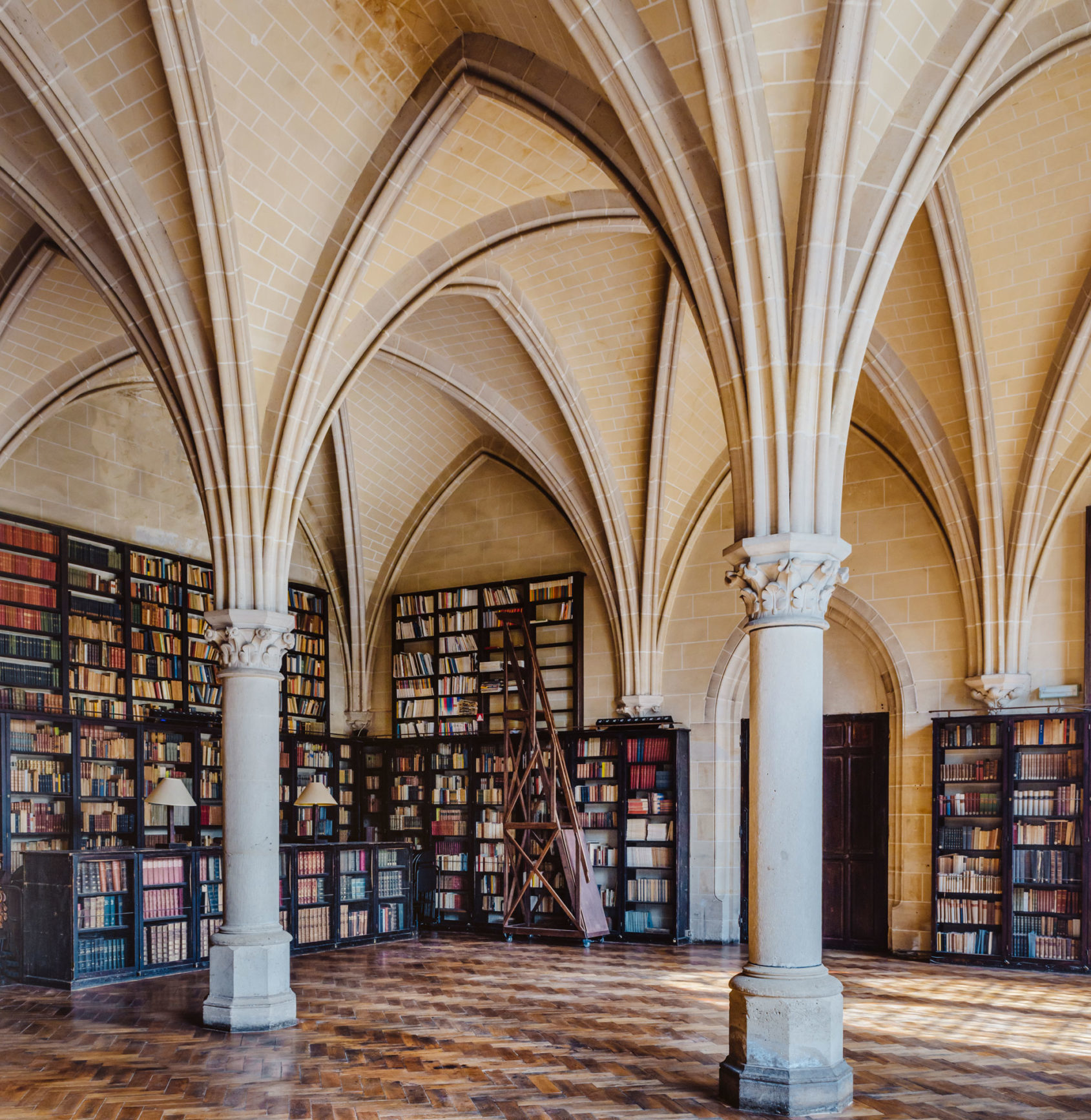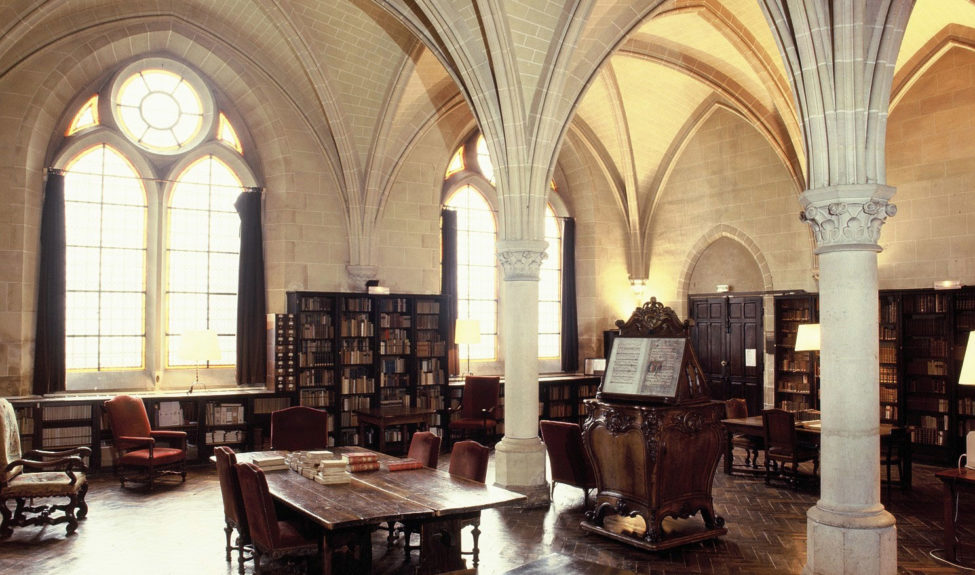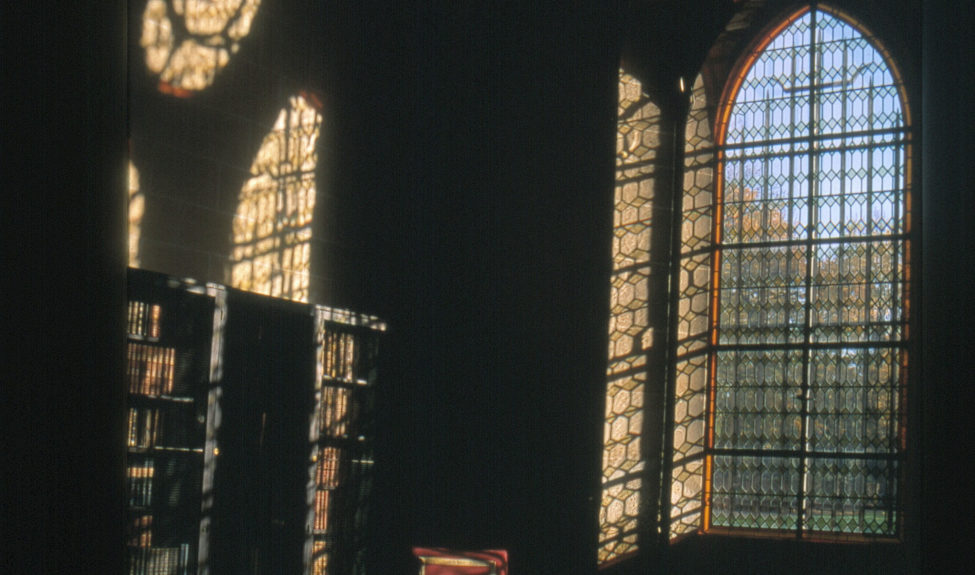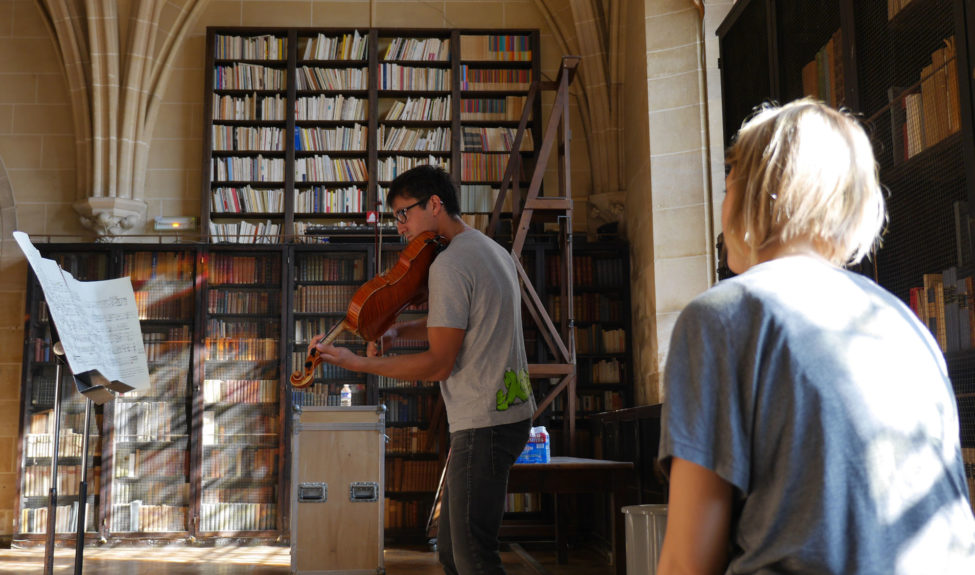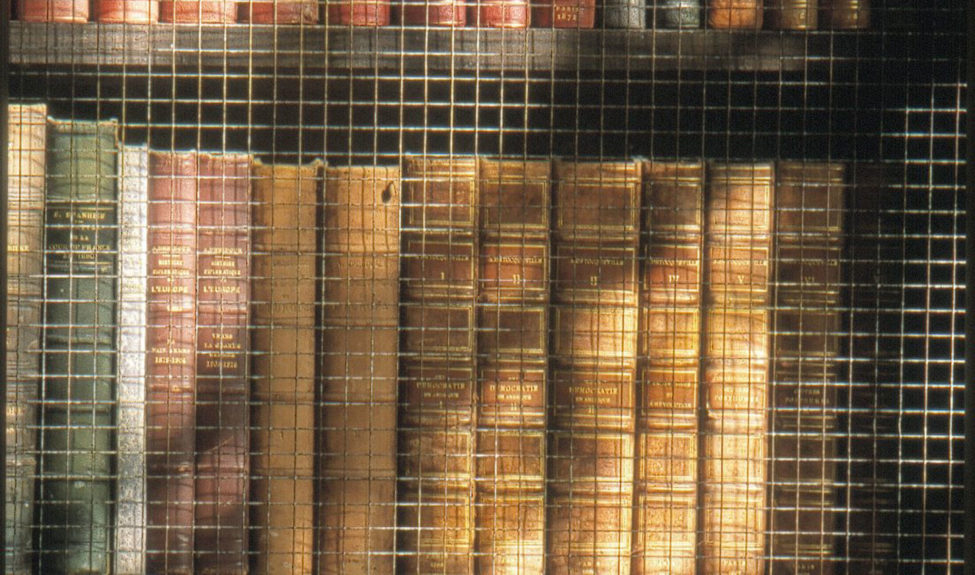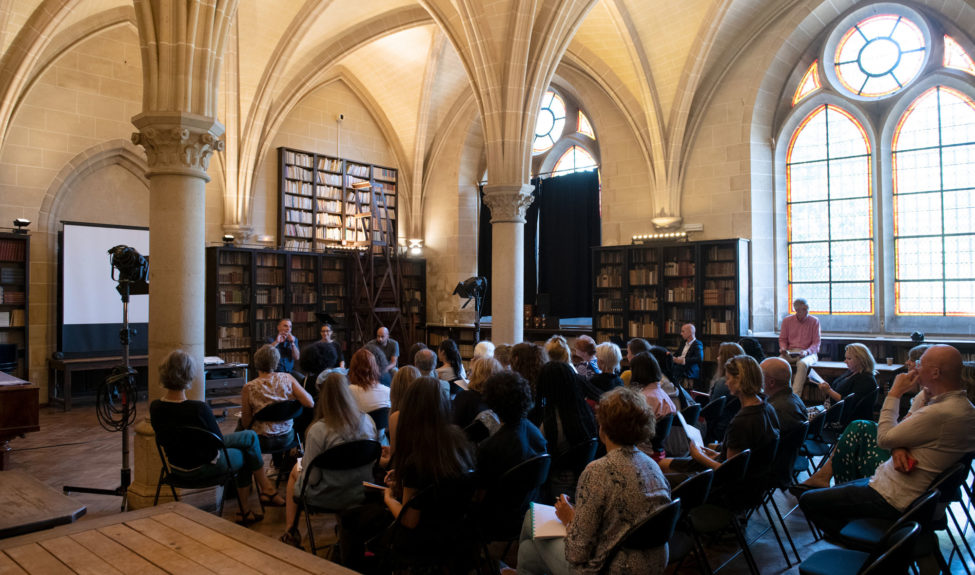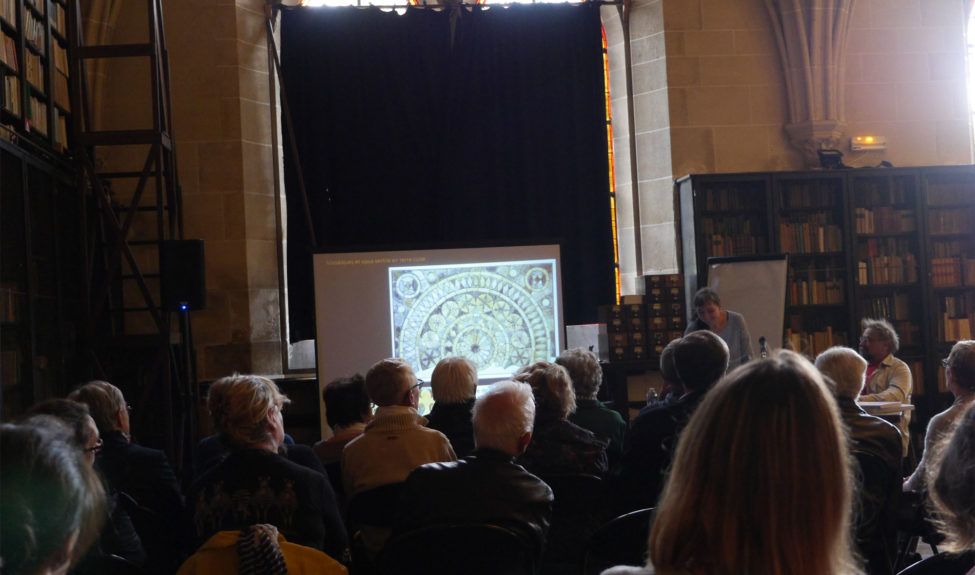In the Middle Ages, this space, located on the ground floor of the Monks’ building, was the “chapter hall”, that is the space where choir monks would engage in dialogue. Today, the 23,000 tomes on its dark wooden shelves bear witness to the dialogues held within these walls in the 20th century: this is indeed the room where discussions and working sessions brought together intellectuals and scholars as notable as Gilles Deleuze, Noam Chomsky, Jacques Monod or Edgar Morin.
more information
The Henry & Isabel Goüin Library no longer has anything in common with the medieval library assembled by the monks and dispersed in 1792. Comprising some 23,000 volumes, it is an eclectic and varied mix, a product of the merging together of a number of different private collections, to which have been added acquisitions linked to the Foundation’s activities.
Located in the East wing of the cloister, this hall was originally accessible through the East gallery, rather than through the corridor as is the case today. In the Middle Ages, this was in fact the abbey’s chapter hall, where monks would meet every day to read a chapter of the Rule of Saint Benedict (hence the name) or to take part in administrative or disciplinary meetings. Abbotts were often buried in chapter halls. This appears to have been the case in Royaumont as well, as a skeleton was discovered in the course of restoration work undertaken in the 19th century.
When the abbey became a textile mill in 1793, the inside of the monks’ building was completely overhauled. Vaults were destroyed, partitions and openings radically changed, and workshops set up in the former chapter hall. Between 1865 and 1876 the area was restored, with no regard however for the original architecture : the space was divided into two working rooms, the larger of which became a common room for the novitiate of the Sisters of the Holy Family of Bordeaux (by then, the nuns were indeed living in Royaumont).
Unused after the nuns vacated the premises in 1905, the hall served inter alia as a dormitory for the WW1 wounded when the abbey was turned into an auxiliary hospital from 1914 to 1919. The Scottish Women then in charge of the establishment called the room the Millicent Fawcett ward, after a British politician and feminist. In 1938, Henry and Isabel Goüin, the then owners of the abbey, set up a library for the Royaumont hostel they had just created, but the library really came into its own in 1949, when they acquired part of Paul Desjardins’ collection, that had been held until then at the Pontigny abbey.
From that time onwards, the library continued to grow thanks to private donations and regular acquisitions, while hosting many talks and meetings of intellectuals and scholars. Designed as a non-specialist library, it was given its current name in 1984 in a tribute to its founders, the first philanthropists of the Royaumont Foundation.
